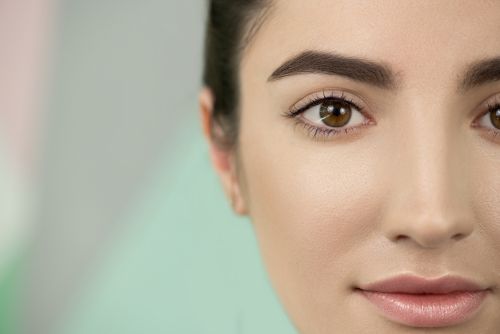Mike Saul
PartnerView Profile
* Indicates a required field
An endoscopic brow lift is one of the five types of brow lift (or forehead lift) procedures that are typically carried out in the UK. Endoscopic brow lift surgery involves a surgeon making a number of small incisions along the scalp, just behind the hairline.
The surgeon performs the surgery through one of the incisions while monitoring the process through a camera that is inserted into a different incision. The forehead skin and muscle tissues are surgically lifted to bring the forehead closer to the hairline. The tissues are pinned in place using stitches or small screws and the wound is closed with stitches and clips.
The entire endoscopic brow lift procedure is performed under general anaesthesia which minimises discomfort for the patient and helps to reduce the invasiveness of the surgery.
While brow lifts are generally safe, the success of such a procedure relies heavily on the skill and care of the surgeon performing it. Brow lift surgery has a number of risks that those looking to undergo the procedure should be aware of before they agree to anything.
In the following guide, the experts at Cosmetic Surgery Solicitors outline the various considerations you should make before opting to undergo any type of brow lift surgery, including the risks involved, and what you should do if you are concerned that something may have gone wrong.

Every surgery comes with risks. Some of these risks may come with the nature of the procedure or the health concerns of the patient. Brow lifts can have a number of potentially long and short-term risks, including:
Before deciding to have brow lift surgery, you should weigh up these risks and decide whether they are worth taking. Part of this consideration should be choosing a cosmetic surgeon who you trust to uphold their responsibilities.
There are five brow lift methods that surgeons use in the UK. Each procedure produces slightly different results. Your surgeon should be able to decide which of the procedures is best for your face shape.
The other types of brow lifts are:
You should ensure that your surgeon explains the different brow lift options that are available to you before agreeing on an endoscopic brow lift. It might be the case that your surgeon is recommending a method which is not the best option; you should seek a second opinion from another independent surgeon before committing to anything.
Following any type of brow lift, you can expect to feel some pain and discomfort, but your surgeon will either give you or recommend some pain medication that will help with this.
Directly after your surgery, your surgeon may wrap your head in bandages or a bind to hold the forehead in place and reduce swelling. Additionally, your surgeon may place a tube leading from the incisions to help with any excess fluid discharge.
Your surgeon should provide you with clear instructions on what you should do to ensure the best healing for your wounds. They should explain to you that you must sleep with your head elevated and that you should avoid any physical strain that might affect the incision area, including running, sports, stretching and heavy lifting. Your surgeon will inform you as to when you will be able to resume your usual activities.
Swelling may last up to a month. To help with the swelling, you should gently apply cold compresses. Doing this when you notice the swelling is especially bad or painful will help to relieve it.
Avoid itching the affected area as this may spread bacteria from your hands to the wounds and may cause the wound to reopen.
Your surgeon will arrange a date with you to remove your bandages and assess your progress. This may happen in the first three days following your surgery, and after seven days they will call you back to remove any sutures or pins.
If you believe that something has gone wrong with your surgery, you should seek a medical diagnosis immediately. If you believe that your surgeon is the cause of your issues, you should make sure you see an independent medical professional, such as your GP.
Once you have been seen to, you should consider making a compensation claim for cosmetic surgery negligence. By doing this, you will be able to claim money that will help you to pay for any expensive corrective surgery, healthcare or support that you may require as a direct result of your brow lift gone wrong.
For more information on how to make a brow lift compensation claim, speak to our team at Cosmetic Surgery Solicitors. We are experts in the area of medical negligence claims and will be able to help you find the support you need. Call us today on 0808 271 3278 or fill out an online contact form to arrange a call back at a time that suits you.
If you have experienced problems following eyelid surgery and think they are the result of negligence, you may be entitled to make an eyelid surgery claim for compensation. Talk to our expert cosmetic surgery negligence team today. Call 0808 273 2903 or request a callback by completing the contact form.